
My sit-spot
This time my sit-spot didn’t mainly consist of swatting mosquitos the whole time (I did still see a few). I arrived at my sit-spot at 5:15pm, and it is located behind the Cocke Memorial Building which is on front quad. Behind the memorial building, there is the Beale Garden which is where I will be spending a great amount of my time every other week (I believe that is correct). If you walk past the chapel, there is a little bridge (not the big one right at the chapel), and if you turn right after crossing the bridge and walk a little ways you’ll find the lonely bench I sit on that is pretty close to the edge of the creek.

Spot where my other plant I was studying that was cut with the grass.
The three things that I picked to observe are down to two:(. The grass was cut around the creek and I guess the one plant that I was not sure if it was actually a plant or weed, the Hollins University Staff thought it was a weed. The plant with the purple flowers is slowly beginning to die, it is beginning to droop and turn blackish/brown rather than the beautiful purple it was last time. The pretty bush with the pretty orangish/pink leaves has now turned to an even pretty dark pink. I am very excited to see how this plant turns out, if it does not lose all the leaves first. I may end up with nothing left to study except the branches that support the bush.
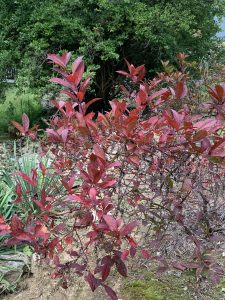
The bush I am observing and the pink leaves that are coming in.
During my quiet observation I noticed that the cicadas were not loud at all, I’m sure this is because of the cooler weather (I am going to miss this sound when the cold weather finally hits). The air was still but nice and to me during the fall, the air begins to smell like fall if that makes any sense. To describe this smell, I would say that it smells like cool damper air with a sort of pine straw scent. I find the pine straw scent a little weird because it is around during every season, but it seems like can smell it during the fall. The sky around this time has a sort of hazy appearance, I feel like this haze lasts until the spring/summer come back around. The sky was just as cloudy as it was during my last visit, which I am beginning to think that maybe that is just how the sky is at this time of day (I went around this time last sit-spot too). I heard birds chirping to the west of me while I was sitting and while I was looking around at the birds, I noticed that the leaves were beginning to change. I would not say they were dramatically changing in color, but I could see how they were becoming droopy and starting to die.
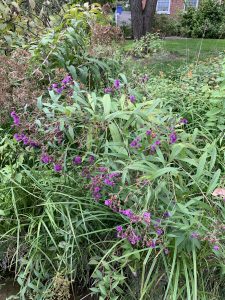
The is the plant that I am studying that was beautiful, but now it is starting to die.
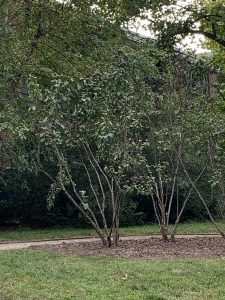
The leaves starting to change and droop on the trees.
While I was walking around my site, I rolled over two different rocks that were sort of beside each other. One of the rocks I put down pretty quick. I did this because I saw something that looks like a crayfish hole, but I was not entirely sure I may have seen one briefly in the hole. I did not get a picture as I was slightly afraid to raise the rock again. When I flipped over the other rock, it was pretty damp and there was a pretty big worm (potentially a nightcrawler), and what looked like a little tiny snail. I was able to snap a picture under this rock because I was not frightened. Under this rock is smelled like mud and I could feel the cooler air coming from the mud which I thought was pretty cool. I learned that I should not flip rocks over fearlessly because I never know what surprise I will find under the rock.

The rock that I was not scared to flip over. You can see the big worm and the snail beside it.
While walking around my site, it was pretty difficult to see in the water because of all the grass the was blown into the water. I have been wanting to flip some rocks over and see what was underneath, which I did and what I saw was pretty cool. I also wanted to get a closer view at the surrounding plants near the edge of the creek. The details were dramatically different up close than they were from not that far away. I was able to see the little green bugs climbing on the plants. I also got pretty close to a few bees while they were landing on plants which was fascinating. They moved too fast for me to snap a picture unfortunately.
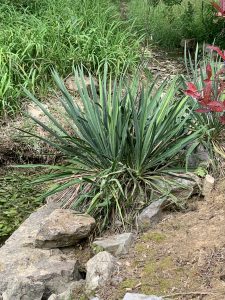
The yucca plant that had plenty of sunlight.
The plant that I observed was, according to google, was a type of yucca plant potentially. I thought this was a little odd because these plants originated in the desert or hot, dry climates. I searched google for a good fifteen minutes trying to figure out what type of plant it is, so this is what I went with. I noticed that this plant grew low to the ground in a big patch where there was not a lot of vegetation. On the other side of the creek, I noticed that this plant grew very tall when it was around a lot of vegetation. This adaptation is just like the dandelion that we learned about in class. When the dandelion had plenty of water but was surrounded by vegetation that wouldn’t allow a lot of sunlight, it grew taller in order to receive the proper amounts of sunlight. The bundle that was close to the ground was not very tall, instead it grew thicker because it did not have to compete for sunlight. These types of plants are used to living in hotter environments, so they have thick and long roots in order to find and hold water for a long time. These plants also have waxy leaves which is also another adaptation that prevents the loss of water due to evaporation. Overall, the plant is very pretty, but I feel as if it is in the wrong environment considering where it originated from and its adaptations.
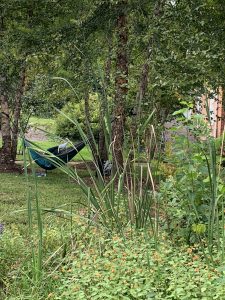
The tall green pieces are the yucca plant surrounded by vegetation that had to grow tall in order to receive sunlight.
I left at 6:30pm.

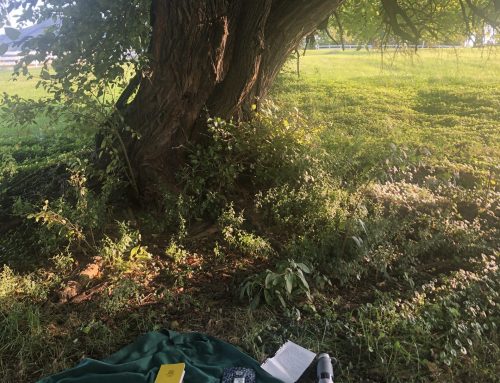
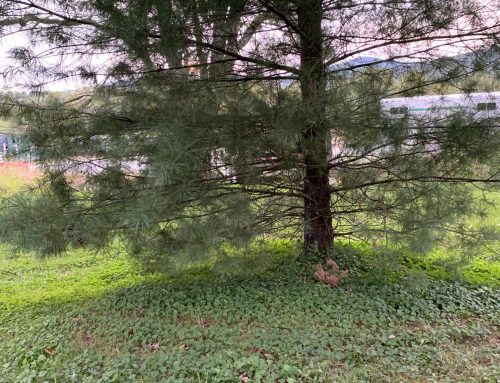
I love your attention to detail! I can visualize all your surroundings and from what I can tell, it’s a pretty garden (I’ve only been over there once). I’m sorry to hear about losing one of your plants you were following! Perhaps it will grow back. Your two other plants are very pretty and colorful!